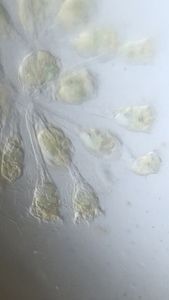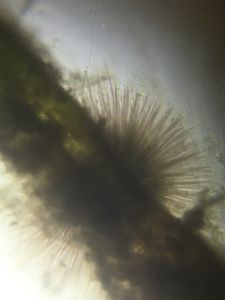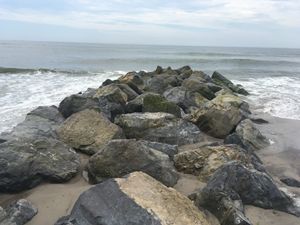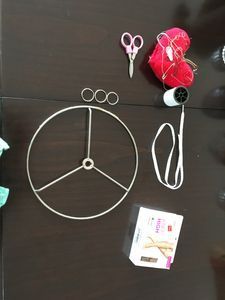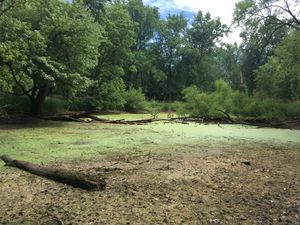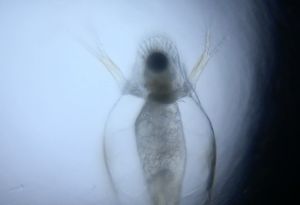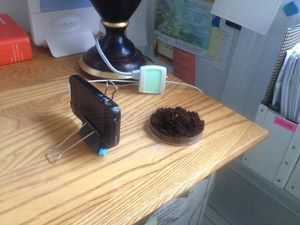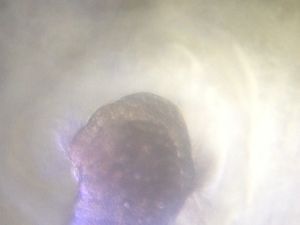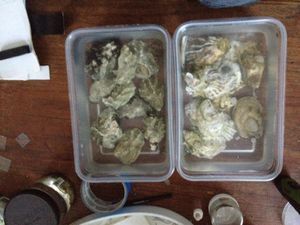Driftwood
 Feb 27, 2016 • 5:09 AM UTC
Feb 27, 2016 • 5:09 AM UTC Unknown Location
Unknown Location 140x Magnification
140x Magnification Unknown
Unknown
Matthew Rossi
I'm a novelist, essayist, and a writing consultant. I work in the writing centers at Columbia and Baruch University and explore research into the overlap of maker cultures and writing. My work with the Foldscope tends to focus on finding wild creatures in urban spaces and looking at how human works are shaped by the movements of the biosphere.
40posts
105comments
4locations
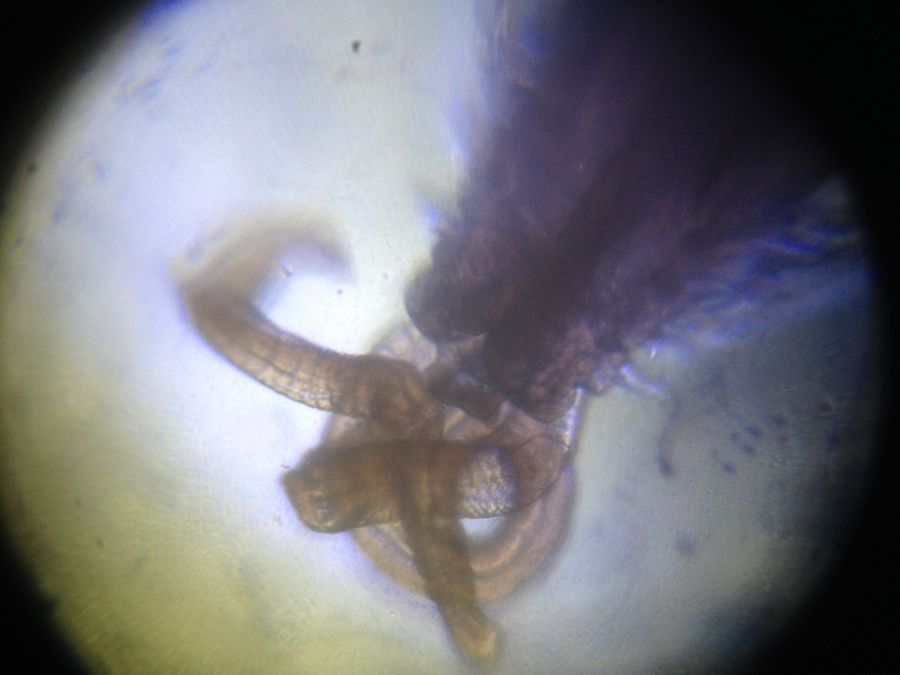
After a couple of weeks living with me, the barnacles and the limpets were starting to look a little peaked, so I decided it was time to bring them back to the water to live out their lives. Granted, these are Pacific barnacles I have returned to the Atlantic, but with a breeding population of only twelve individuals, my sense is that this is not such a risk to the environment. Prior to letting them go, I caught up as many eggs as I could and filmed.
The movement evident in these videos seems to indicate larval development. You can see the hint of the naupilius shifting around inside. No signs of them just yet, but I’m hopeful nonetheless.
As I brought them to the water–the tidal pool in DUMBO to be exact–I noticed a large piece of driftwood floating in the surf. Piece of it had broken off around and floated, worm eaten and soggy, in the surf. My intent had not been to return with any critters, but ever since catching one from the oysters, I’ve wanted to find another polychaete to look at. It seemed I missed portions of it worth viewing. I also want to see a shipsworm, actually a type of clam with a shell modified to chew through wood. I found a chunk of driftwood small enough for me to take in a mason jar with some water and seaweed, and brought it back with me.
As I brought them to the water–the tidal pool in DUMBO to be exact–I noticed a large piece of driftwood floating in the surf. Piece of it had broken off around and floated, worm eaten and soggy, in the surf. My intent had not been to return with any critters, but ever since catching one from the oysters, I’ve wanted to find another polychaete to look at. It seemed I missed portions of it worth viewing. I also want to see a shipsworm, actually a type of clam with a shell modified to chew through wood. I found a chunk of driftwood small enough for me to take in a mason jar with some water and seaweed, and brought it back with me.
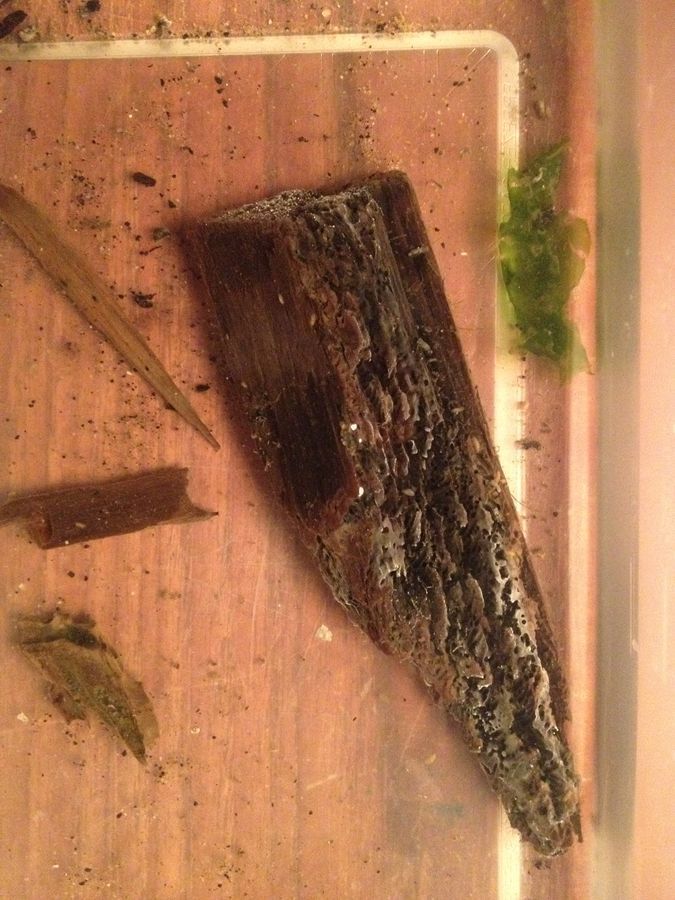
No shipworms found in it, but those tiny holes were occupied by numerous marine woodlice, like tiny underwater pillbugs (or rolly-polys, or, as my partner insists I call them, doodlebugs) wandering around living out lives on this small bit of wood. They’re maybe a post for a later time, though, because I did get lucky with the find of a polychaete worm. I noticed it hanging out of a hole one day, extending its long palps into the current I was causing with my eyedropper.
As I said, the last time I caught a polychaete, I managed to catch the movements of its feet, but missed (to my chagrin) the movements of its palps, those long, tentacle like extensions that the worm uses, in part, to feed. I wanted to get a view of these, to see if I could see some of the filter feeding action.
Sadly, this was not a filter feeder. But I filmed the palps nonetheless. (Apologies for the heavy movement in this shot…I’ve been having some odd issues with the light that have made me shift the camera more than usual).
As I said, the last time I caught a polychaete, I managed to catch the movements of its feet, but missed (to my chagrin) the movements of its palps, those long, tentacle like extensions that the worm uses, in part, to feed. I wanted to get a view of these, to see if I could see some of the filter feeding action.
Sadly, this was not a filter feeder. But I filmed the palps nonetheless. (Apologies for the heavy movement in this shot…I’ve been having some odd issues with the light that have made me shift the camera more than usual).
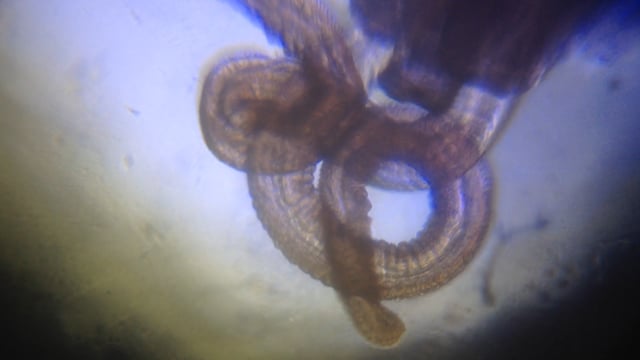
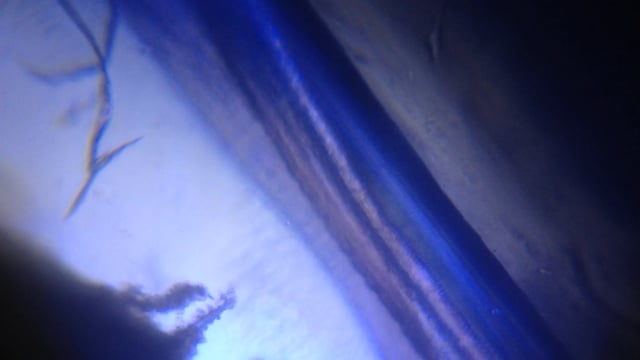
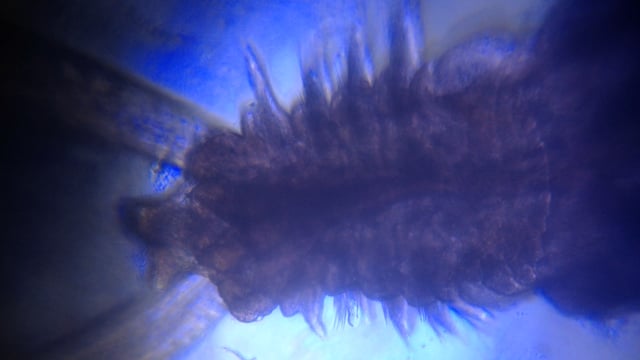
In that last one, you can see the head of the worm as it thrashes under the slip cover. That creature, which appears so monstrous in these videos, was only about an inch long fully extended. I’m fascinated by what I see in the palps. I see the movement of cilia along the edge, creating current as it goes and possibly moving food toward its mouth. I also see fluids moving in the palp, the supply of blood, as it were. The polychaete is an annelid worm, like an earthworm; like an earthworm, I suspect this one is a detritus eater, living on the wood and anything else it can find. But then what does it do with those elongated palps? If it isn’t catching food like the barnacles were, what purpose do they serve?
Elsewhere, when shining a sidelight in the water, I noticed one of the many specks floating around was working its way in a corkscrew fashion. I sucked it up into my eyedropper and prepped a slide in my usual way, with four posts and a drop of water in the middle. But I couldn’t find the creature! It wouldn’t sit still in my line of sight long enough. Finally, when I prepared the slide again, this time without the posts, I could see it.
Elsewhere, when shining a sidelight in the water, I noticed one of the many specks floating around was working its way in a corkscrew fashion. I sucked it up into my eyedropper and prepped a slide in my usual way, with four posts and a drop of water in the middle. But I couldn’t find the creature! It wouldn’t sit still in my line of sight long enough. Finally, when I prepared the slide again, this time without the posts, I could see it.
Once I could see it, the rotifer swirled and blossomed for me. This was a beautiful specimen of a rotifer, too. Large and ghostlike in its movements, it twirled and made its way around air bubbles through the water. I love that, in this video, I can see how its shell opens and closes, how it opens out when it wants to move. The more of them I see, the more rotifers and other ciliates grow on me. That the movement of cilia comes up again and again in my investigations, in all sorts of creatures create a cool sort of morphological line from protozoa up through even us.
The wood will go back to the water this weekend as I prepare for a more proper and, frankly, harrowing experiment. But more on that will come later.
The wood will go back to the water this weekend as I prepare for a more proper and, frankly, harrowing experiment. But more on that will come later.
Sign in to commentNobody has commented yet... Share your thoughts with the author and start the discussion!
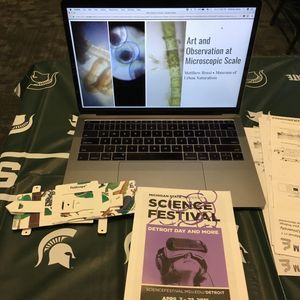
 0 Applause
0 Applause 0 Comments
0 Comments




